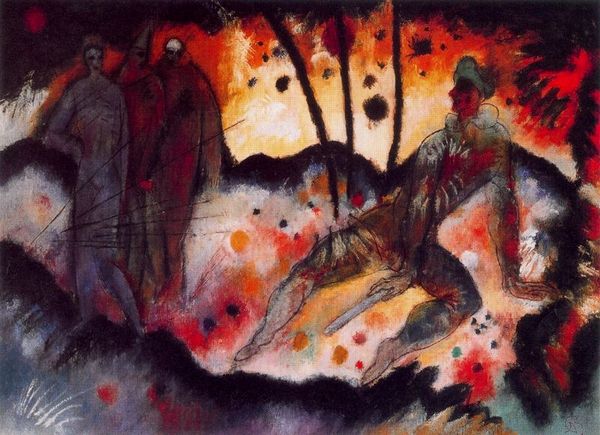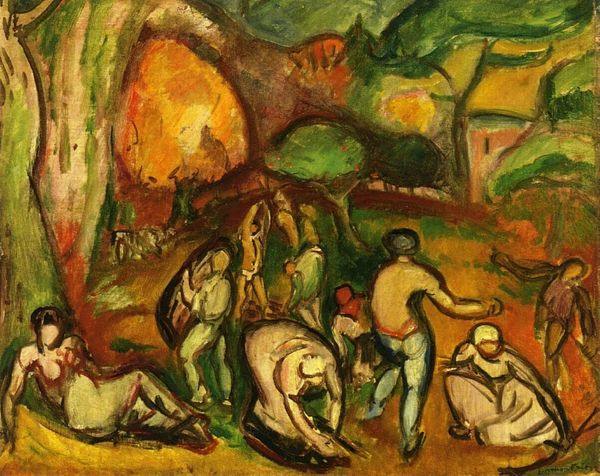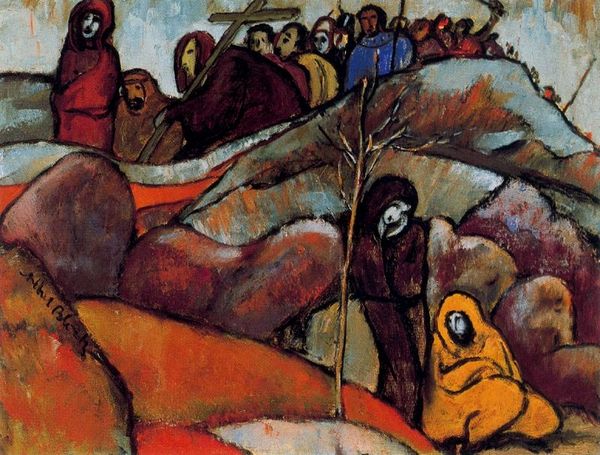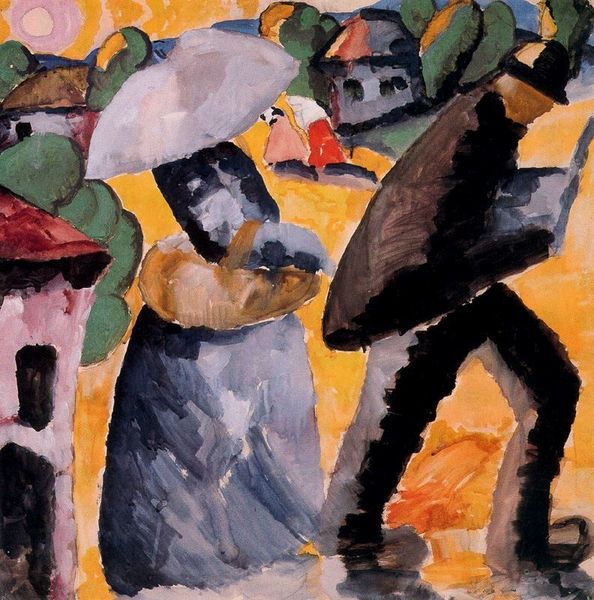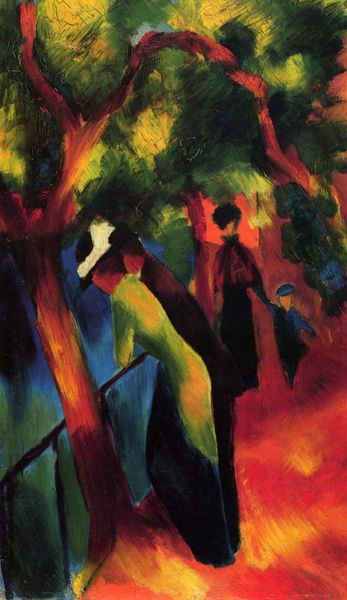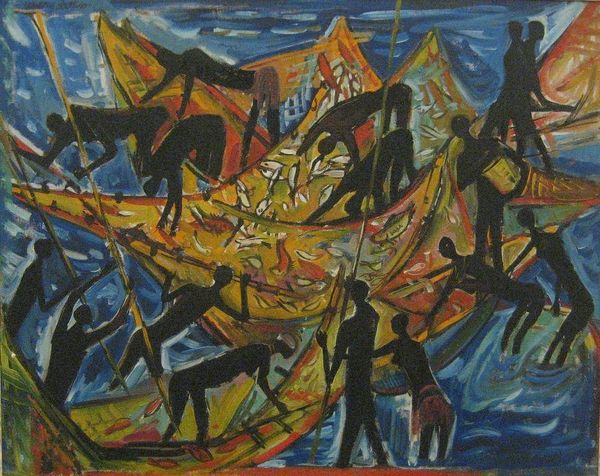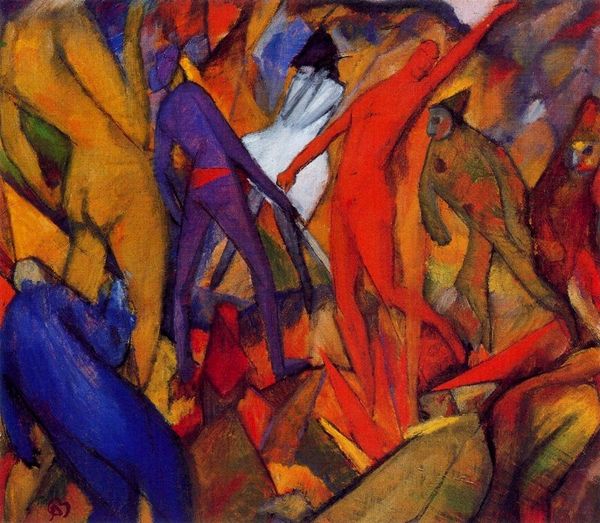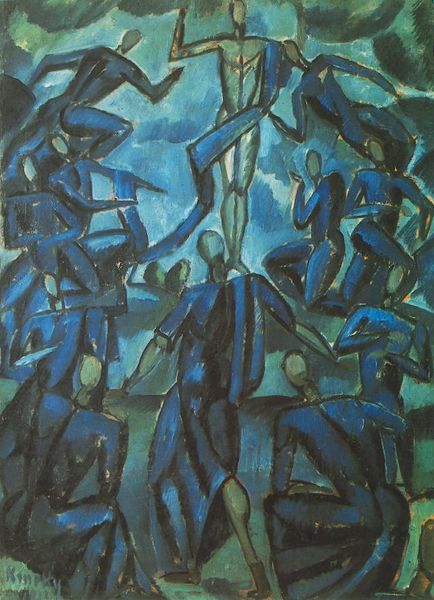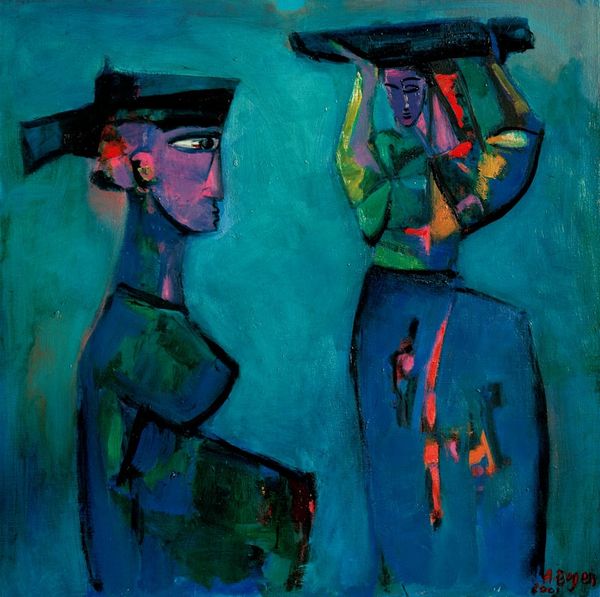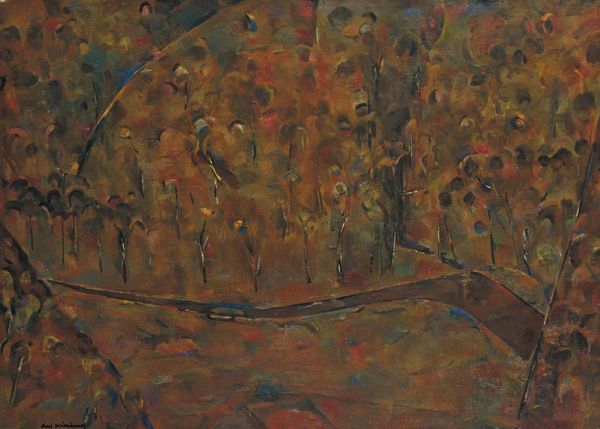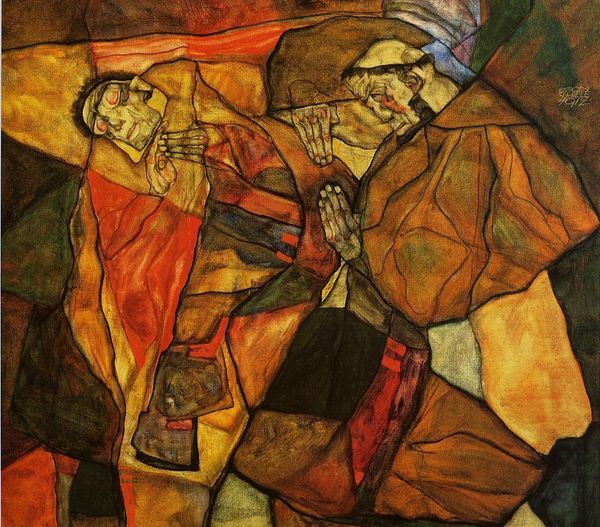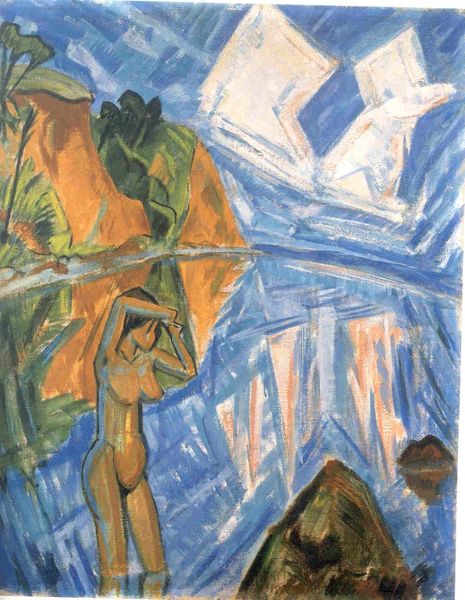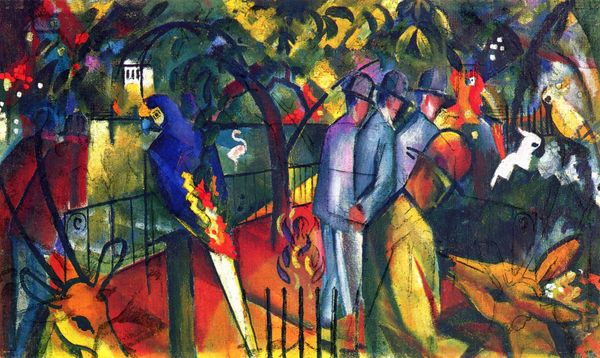
#
rayonism
Copyright: Public domain US
Editor: Goncharova's "Woodcutters," created in 1911, is such a striking painting. The sheer vibrancy of color is almost overwhelming. What do you make of the bold use of color and form here? Curator: Notice how the figures, though seemingly engaged in a simple task, are rendered almost iconic by the intensity of color and line. It echoes ancient woodcuts yet pulses with a distinctly modern anxiety. This contrast reflects the shifting cultural landscape of Russia at the time. Editor: Shifting cultural landscape? How so? Curator: Consider the era. Traditional rural life was rapidly giving way to industrialization. The woodcutters become symbols of a vanishing way of life, elevated to almost mythological status through the Fauvist lens. The fiery palette evokes the fervor of both creation and destruction. Editor: That's fascinating. So, the colors aren't just aesthetic; they represent something deeper? Curator: Precisely. Color is never merely decorative. Here, the predominantly red and orange tones symbolize not only the physical labor of woodcutting, but also a cultural reckoning, a burning away of the old to make way for the new. What feeling does that evoke in you? Editor: A feeling of intense transition, like something is both being created and destroyed at the same time. I hadn’t considered the social commentary aspect before; it adds a whole new layer to the piece. Curator: Indeed. Art allows us to see beyond the surface, decipher the cultural memory embedded within. Perhaps it reflects how all progress comes at a cost. Editor: This makes me consider art's function to present reality with something else, beyond face value. Thanks for opening my eyes.
Comments
No comments
Be the first to comment and join the conversation on the ultimate creative platform.
